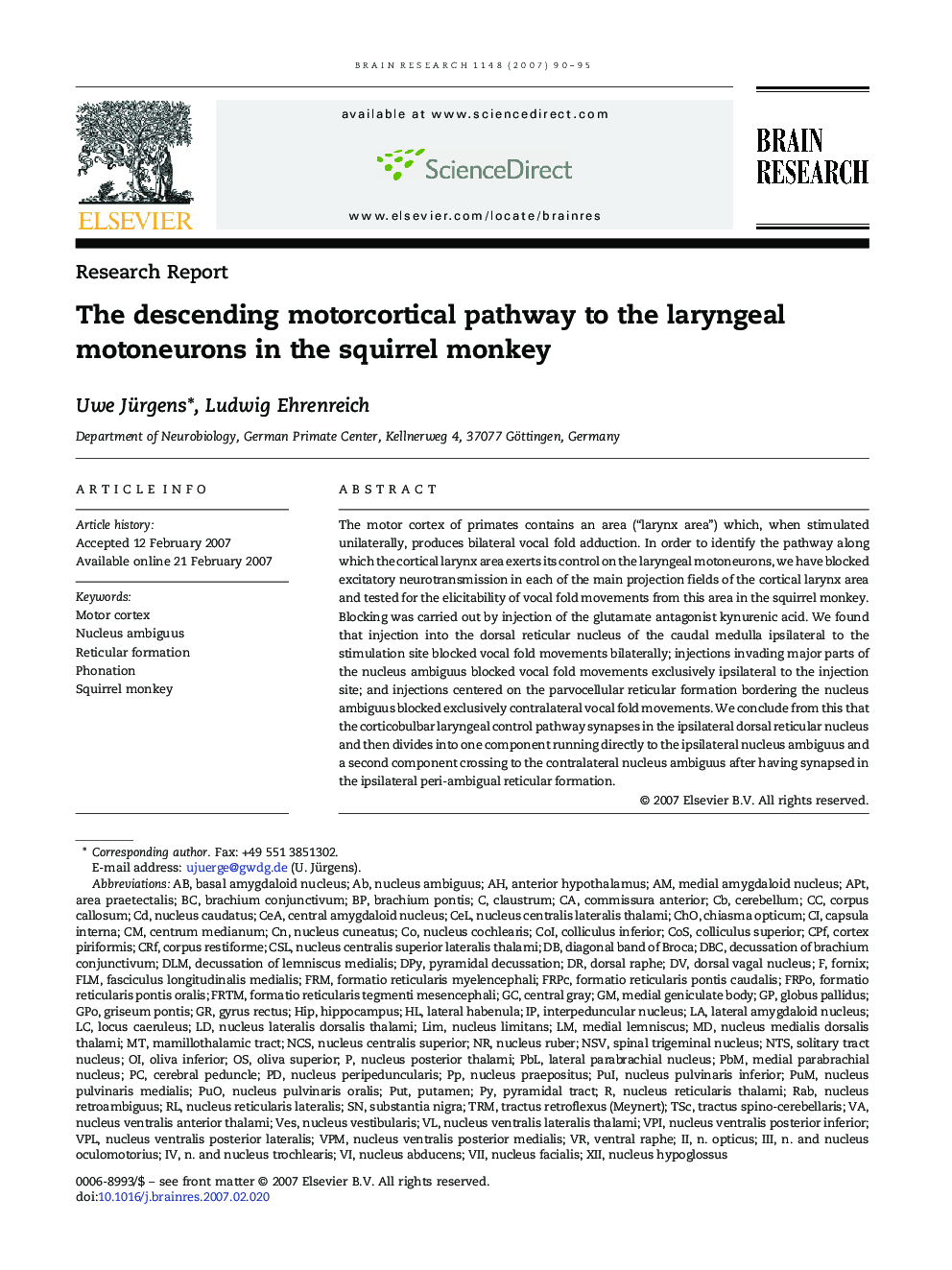| Article ID | Journal | Published Year | Pages | File Type |
|---|---|---|---|---|
| 4331330 | Brain Research | 2007 | 6 Pages |
The motor cortex of primates contains an area (“larynx area”) which, when stimulated unilaterally, produces bilateral vocal fold adduction. In order to identify the pathway along which the cortical larynx area exerts its control on the laryngeal motoneurons, we have blocked excitatory neurotransmission in each of the main projection fields of the cortical larynx area and tested for the elicitability of vocal fold movements from this area in the squirrel monkey. Blocking was carried out by injection of the glutamate antagonist kynurenic acid. We found that injection into the dorsal reticular nucleus of the caudal medulla ipsilateral to the stimulation site blocked vocal fold movements bilaterally; injections invading major parts of the nucleus ambiguus blocked vocal fold movements exclusively ipsilateral to the injection site; and injections centered on the parvocellular reticular formation bordering the nucleus ambiguus blocked exclusively contralateral vocal fold movements. We conclude from this that the corticobulbar laryngeal control pathway synapses in the ipsilateral dorsal reticular nucleus and then divides into one component running directly to the ipsilateral nucleus ambiguus and a second component crossing to the contralateral nucleus ambiguus after having synapsed in the ipsilateral peri-ambigual reticular formation.
